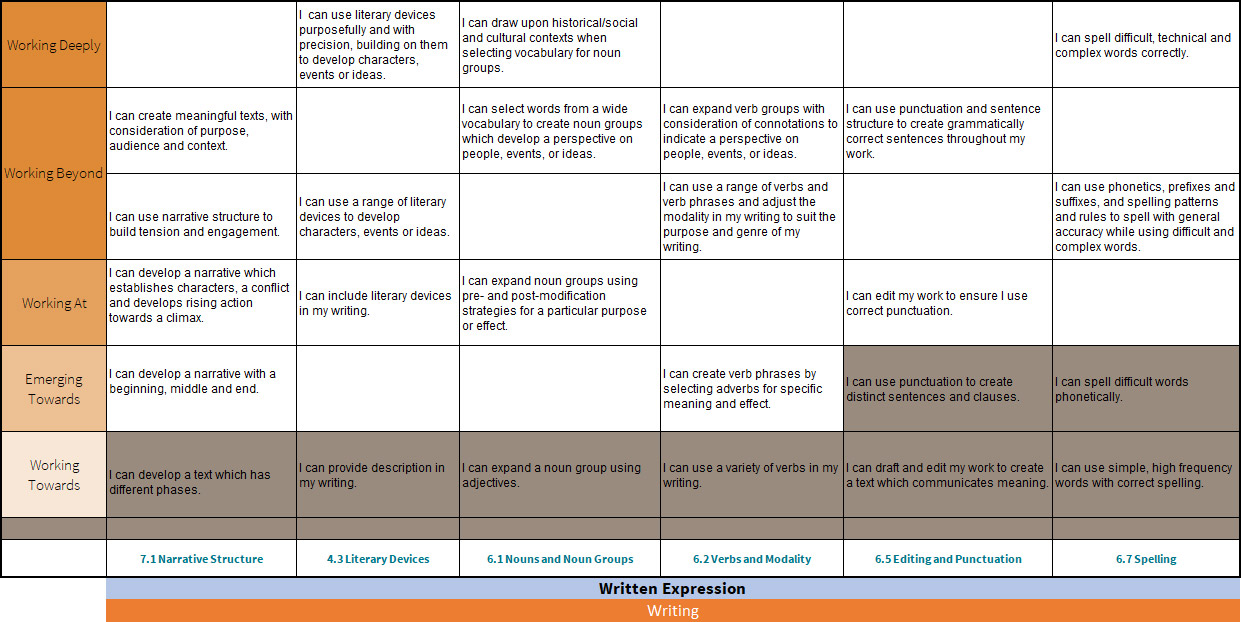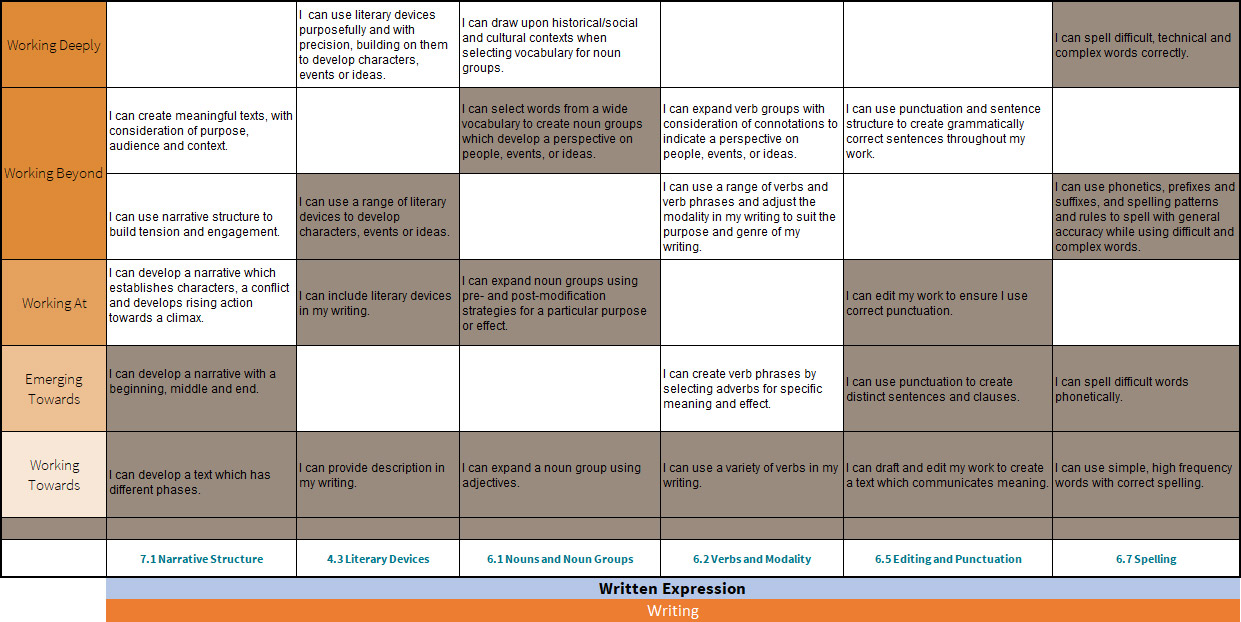
How to read your rubric
Current Families
At Preston High School, every student is given a rubric at the beginning of a unit of work that breaks down what will be studied into developmental steps the student can take. Students are assessed against this rubric and an individualised snapshot of their learning is created. No matter the student’s level of understanding, from novice to expert, students use the rubric and the lessons to work at the edge of their learning in the skill or knowledge that best suits them. At the end of the unit, students are assessed against the rubric again, and growth in their skills and knowledge and the next steps in their learning are identified.
Rubric Structure
Below is an example of a rubric used in English. Initially, it can look overwhelming, but it becomes easy to read with a few simple steps.

Organising elements
Across the bottom of the rubric are the organising elements – the key features, concepts or elements the assessment is targeting. For example, in the image above, one of the organising elements is the student’s ability to demonstrate “Written Expression”.
Actions
Sitting above the organising elements are the actions. These are the different categories of what the student can do, say, make or write to demonstrate a particular skill or knowledge. In the example above, one action is the use of Nouns and Noun Groups, another is their Spelling.
Quality criteria
The third part of the rubric is the Quality criteria. These boxes describe the increasing sophistication of what students can do, say, make or write for each action. The easiest quality criteria are at the bottom of the rubric, and they progressively increase in difficulty with each level of the rubric.
Difficulty Scale
On the left-hand side of the rubric is a scale of the difficulty of quality criteria that ranges from I need support, to Stretch skills. The quality criteria inline with the Working At statement, show the parts of the assessment that students must do, say, make or write to demonstrate proficiency at the year level they are in.
Formative and Summative Feedback
A typical student’s rubric after an assessment may look like the ones below.
Formative Teacher Feedback

Summative Teacher Feedback

As you can see from the examples above, the student has shown a range of skills and knowledge across the rubric. The highlighted quality criteria show the level of the student’s actions.
For the formative assessment rubric on the left, the student has demonstrated their ability in “6.5 Editing and Punctuation” (the second last column on the right). They have shown that they “can use punctuation to create distinct sentences and clauses”. Therefore, the goal or next step for the student during the unit is to try and achieve the quality criteria above, in this case, “I can edit my work to ensure I use correct punctuation.”
If you look at the rubric on the right-hand side, the Summative teacher feedback, the quality criteria the student was goaling for has been highlighted. This shows that the student has been able to grow in that action since starting the unit or topic. As you can see from the rubric, they have gained several quality criteria across the actions and, in some cases, two.


